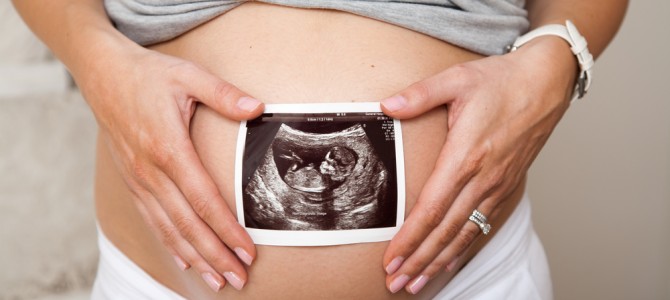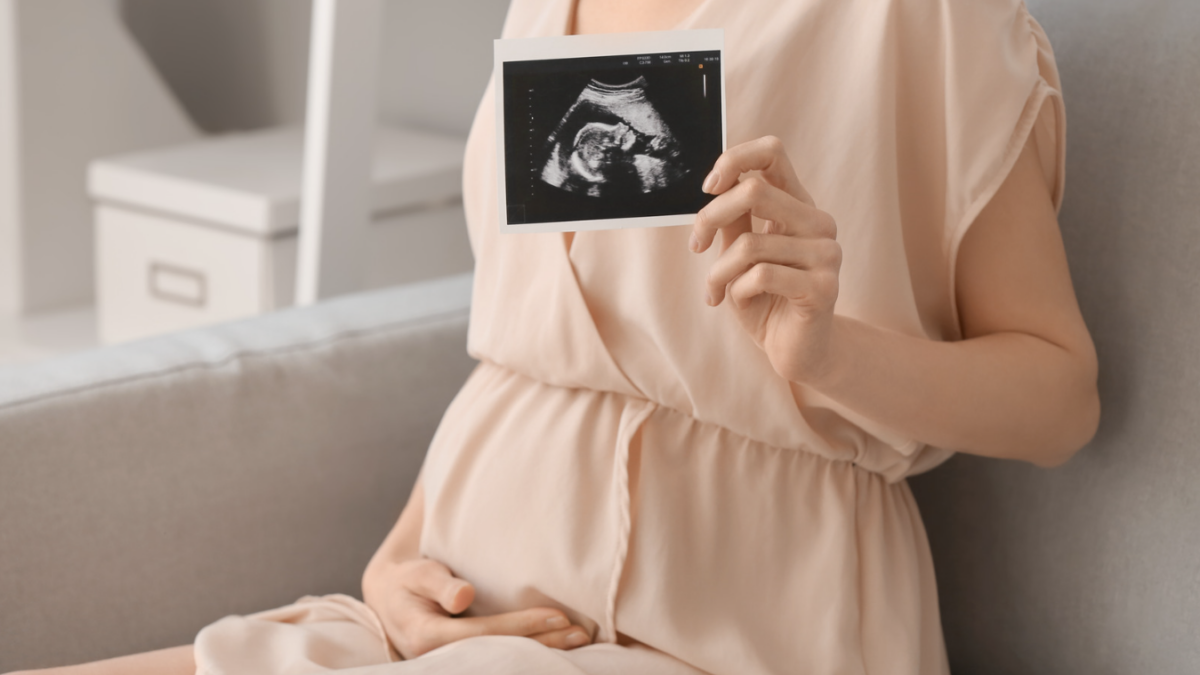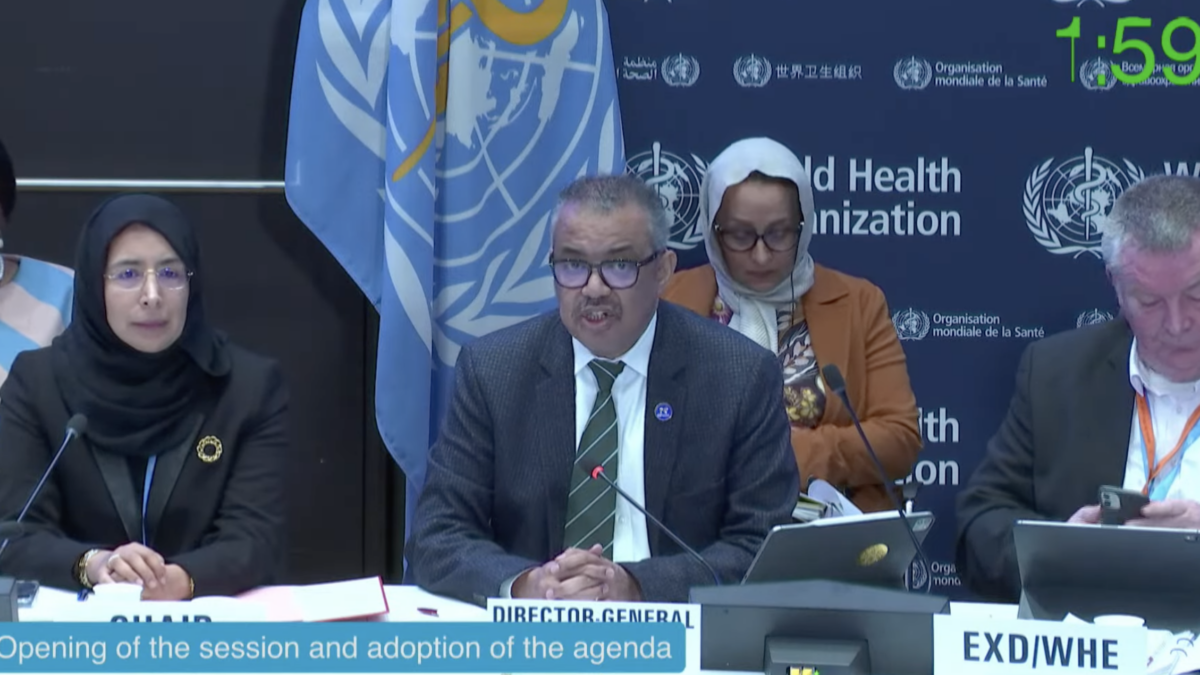
Being pregnant in 2015 is a constant exercise in cognitive dissonance.
At 16 weeks along, if I eat deli meat, dip a toe in a hot tub, or order an espresso at Starbucks, then I’m already a bad mom who’s putting her baby at risk. But if I decide that said baby has come at an inconvenient time or has too high a risk of having an undesirable medical condition, then I am a responsible woman who should be praised and supported for making the tough decision to dispose of the unwanted products of conception that have invaded my body.
My Little Poppy Seed
Back in May, when I got the positive test that meant our lives were going to change forever, I did what any good millennial does when faced with an unfamiliar situation: I Googled like crazy, and I downloaded a bunch of new apps.
There are so many pregnancy apps out there, and they have all kinds of different features. One common theme is the use of fruit to help you visualize how big your baby is. Right now, my baby is the size of an avocado.
When I first opened them up, both The Bump and the What to Expect apps agreed that at four weeks since my last menstrual period—just two weeks since conception—my baby was the size of a poppy seed. My baby. Just hearing that phrase made me imagine what it would be like to have a little one to hold in less than nine months’ time. I wondered whether he or she would have my dark brown hair or be a blonde like my husband. What kind of personality would this new little one have?
My baby. Sure, the apps explained that his or her technical name at four weeks was a “blastocyst” whose cells would soon split to develop into an embryo and a placenta. Still, the terms in which my baby was described were undeniably personal. If I were to take the app at face value, there would be no getting around the fact that the poppy seed-sized little one inside me was, in fact, a human being.
What to Expect counseled:
While the tiny ball of cells that is your baby begins to undergo its magical transformation into a multilayered embryo, your body is going through a magical transformation of its own – from a reliable buddy to a weird and wacky science experiment.
The Bump pointed out that, even at this early stage, when most women don’t even know they’re pregnant yet, “Baby’s neural tube, the building block of his spine, brain, and backbone, is already formed.”
The apps’ descriptions switched back and forth between male and female pronouns, but never called the baby an “it.” Why would they? Baby’s DNA, including his or her sex chromosomes, was determined at the moment of conception. Again, from The Bump: “She’s busy settling into her new home (your uterus), prepping for all the crucial development she’ll be doing over the next six weeks.”
Wanted or Unwanted?
Obviously, these apps are targeted at women who have already decided to keep their babies—who are generally happy that babies have set up shop in their bodies. If a blastocyst, embryo, or fetus is wanted, then it is a baby—a new little person who should be nurtured with the utmost care as he snuggles into his new home in his mother’s safe, cozy uterus.
If said blastocyst, embryo, or fetus is not wanted, well… That’s a different story.
A quick Google search for “first trimester abortion” brings up the website of Our Bodies Ourselves, a Cambridge-based nonprofit that “develops and promotes evidence-based information on girls’ and women’s reproductive health and sexuality.” Their page on “Early Abortion Options” helpfully and tastefully explains the two most common options for “removing a pregnancy:”
A medication abortion (also called medical abortion or abortion with pills) involves taking medicines to end a pregnancy. An aspiration abortion (also called surgical or suction abortion) is a procedure that uses medical instruments in the vagina and uterus to remove the pregnancy.
Nowhere on the page is there a reference to a baby or a child. If they cared about being scientifically accurate or precise, they’d at least refer to the “embryo.” But no—even the bloody miscarriage caused by a medication abortion is described euphemistically: “Heavy bleeding with clots is common when you are passing the pregnancy.” So much for “evidence-based information.”
What you are “ending,” “removing,” or “passing,” as the woman facing an unwanted pregnancy is told soothingly, is simply “the pregnancy”—that unpleasant physical state in which you’ve found yourself. It’s little more than a common affliction: you wouldn’t feel any qualms about “ending” your cold or flu, would you?
How Planned Parenthood Describes Pregnancy
What about Planned Parenthood, that embattled defender of women’s rights and healthcare? Well, on a page labeled “Pregnancy Options,” the organization tries to strike a moderate tone, noting that “If you are pregnant, you have three options to think about — abortion, adoption, and parenting.”
Oh, how balanced! It’s lovely that Planned Parenthood gives full and accurate information about how to go about receiving adequate prenatal care. But wait… why does an analysis of Planned Parenthood’s own publicly available data shows that 94 percent of all pregnant women who seek “medical care” at their facilities end up aborting their babies?
Perhaps it has something to do with the fact that women are told that a surgical abortion will “gently empty your uterus” that they will most likely “feel relief after an abortion.”
Interestingly, the “week-by-week” description of pregnancy on the Planned Parenthood website never uses the word “baby.” Instead, it primarily focuses on the negative or unpleasant symptoms of pregnancy that women may feel, emphasizing that most are likely to not only last throughout the pregnancy, but also cause great emotional strain and physical discomfort. (Most other well-researched pregnancy resources, meanwhile, note that many symptoms lessen in the second trimester.) The details of fetal development are dealt with in a much more cursory manner than the details of potential maternal symptoms.
I can’t help but wonder how much lower that 94 percent statistic would be if Planned Parenthood provided the same detailed information to women in crisis pregnancies that pregnancy apps like The Bump provided to me.
Facing the Facts
Maybe I’m naïve. Maybe most women considering abortion wouldn’t think twice if they could see their babies grow from the size of a lime to an avocado over the course of just a few weeks. Maybe watching videos illustrating the intricate details of her child’s physical development and hearing him called what he is—a baby, not just a “pregnancy”—would have no impact on a woman who feels so vulnerable and alone that she views abortion as her only choice.
Clearly the economic, social, and emotional forces pushing at-risk women toward abortion are real, and they are strong. To help women choose to keep their babies, pregnancy education must be accompanied by real and long-lasting financial, emotional, and spiritual assistance, especially for those who face crisis pregnancies.
The Planned Parenthood videos have shown us that there are some people who treat aborted fetuses as nothing more than biological waste to be bought, sold, and experimented upon. Yet I believe that this type of hardened rejection of the value of human life is rare. The average pro-choice voter clings to the maxim of “safe, legal, and rare,” precisely because it allows him or her to avoid thinking about the brutal reality of what he or she defends. These are the people whose minds can be changed. These are the people whose misplaced empathy cannot be allowed to blind them to the humanity of the unborn child any longer.
In an age when my phone can tell me when my first-trimester baby’s heart started beating, there’s just no excuse for ignorance.









